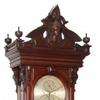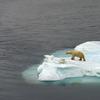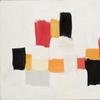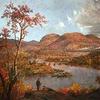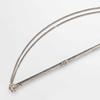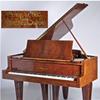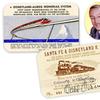'Eugen Gabritschevsky: Theater of the Imperceptible' Opens at American Folk Art Museum in March
- NEW YORK, New York
- /
- February 14, 2017
Convergence of science and art explored by art brut master
The first major retrospective in the United States of the work of Eugen Gabritschevsky (1893–1979) will open on Tuesday, March 14, 2017, at the American Folk Art Museum (2 Lincoln Sq., Columbus Avenue between 65th and 66th Streets, NY). Eugen Gabritschevsky: Theater of the Imperceptible contains eighty-two art works–gouaches, watercolors, and ink and pencil drawings–by the Russian-born artist and scientist, along with archival documents. The exhibition is curated by Valérie Rousseau, PhD, Curator, Self-Taught Art and Art Brut at the American Folk Art Museum. It is organized in collaboration with La maison rouge, Paris, and the Collection de l’Art Brut, Lausanne, where it was presented in 2016 and 2017, under the leadership of Antoine de Galbert and Noëlig Le Roux (for La maison rouge) and Sarah Lombardi (for the Collection de l’Art Brut.)
“We are thrilled that the first American in-depth exhibition of Gabritschevsky’s work is here at the American Folk Art Museum,” says Dr. Anne-Imelda Radice, Executive Director of the museum. “This partnership with La maison rouge and the Collection de l’Art Brut has been fruitful, as it provided context and scholarship on this prolific and relatively unknown artist. Gabritschevsky’s marriage of art and science–a rare professional background for artists in the art brut canon–allows for the deepest observations on life and nature.”
Both of Gabritschevsky’s passions– scientific observation and artistic expression–started when he was a child. He was raised in a family of privilege in pre-revolutionary Russia, with private tutors who taught him music, languages, art, and philosophy. Fascinated by nature, insects in particular, Gabritschevsky conducted experiments that led to his field of study‒biology and genetics–at the University of Moscow. An exceptional student, he was awarded a fellowship to complete post-doctoral studies at Columbia University from 1925 to 1927, where he researched the transmission of colors and color patterns in insects. A few years after he moved to Paris to work at the Pasteur Institute, his mental health started to decline, forcing him, ultimately, to end his scientific career. In 1931 he was admitted to the Eglfing-Haar Psychiatric Hospital, close to Munich, Germany, where he lived for the next fifty years. There, he produced an enormous body of work, about 3,000 pieces, that relied on “the accidental image” and that echoed techniques and styles of surrealist artists such as Max Ernst.
Dr. Rousseau comments that, “Gabritschevsky’s art is embedded in his scientific mindset, constantly engaged in a practice characterized by experiments, observation skills, a vibrant psyche, and an open mind that extols the virtues of the unexpected. He once wrote that ‘there are some processes in art that engage the unforeseen, putting us in direct contact with the magical essence of nature.’ As a result, his oeuvre is strikingly diverse: a visual difference appears between his early works–expressionistic and more naturalist in style–and the ones created after his hospitalization. The latter do not adhere to artistic conventions, progressing to the fantastic. Nonetheless, the angle he takes on his subject matter is still the same–the serial and methodical approach of the scientific mind. Also consistent is his fascination with color variations and mutations, his sophisticated composition, and his propensity for dramatization–notably the sinister and theatrical, which inspired the exhibition’s title.”
A 192-page catalog, Eugen Gabritschevsky, 1893–1979, (Snoeck, 2016) with essays by Annie Le Brun, Sarah Lombardi, Pascale Jeanneret, Valérie Rousseau, Antoine de Galbert and Noëlig Le Roux, in English and French, accompanies the exhibition. It is available through the Museum Shop and on http://shop.folkartmuseum.org.
Eugen Gabritschevsky: Theater of the Imperceptible will be augmented by a number of public programs at the museum that will explore the artist’s life and work. For more information, please visit www.folkartmuseum.org


270x400_c.jpg)





